FEATURES|COLUMNS|Ancient Dances
Self-reflection in Kashmir
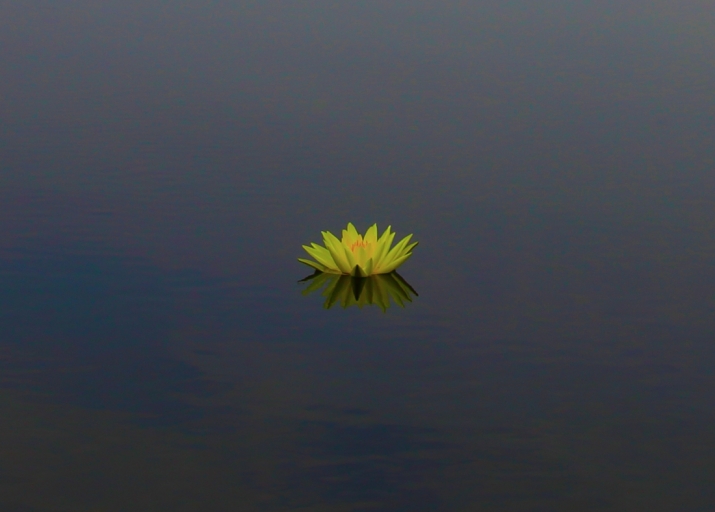 A water lily. Simple, pure, and powerful. Photo by Anne-Elvire Buciuni, 2016
A water lily. Simple, pure, and powerful. Photo by Anne-Elvire Buciuni, 2016The world is beset by what are often called “intractable problems.” Agitation and response seem to run in circles of escalating violence, with little apparent creativity in the attempts to resolve these issues. Perhaps it is time to take a moment to pause, to self-reflect on what it would take to change a discussion, to offer a way forward that is not merely a self-righteous rehash of the past? While I was working in the Vale of Kashmir in the summer 2016 with a 700-year-old tradition of satirical performers known as Bhand Pather, whose plays are based on Sufi poetry and social observation, these simmering tensions took a turn for the worse. Eight Indian soldiers were murdered on a bus when militants ambushed an official convoy. Several days later, Burhan Wani, a popular young militant leader, was killed in a gun battle with security personnel, unleashing years of pent-up frustration among the populations of villages in Kashmir as well as the Indian security forces. In this ongoing cycle of violence and retribution, Kashmir is, regrettably, not so unique in the world, but perhaps the world has forgotten the suffering of Kashmir?
The death of Burhan Wani was unnecessary, egged on by social media celebrity, Pakistani agitators, and hot-headed young people who are naively ill-equipped to fight the professional Indian Army. It was the death of a symbol more than the death of a misguided young man. Pakistani Muslim leaders urge the youth of Kashmir take up arms, while sending their own children abroad to be educated at exclusive schools. The Indian military, routinely pelted with stones from arsenals of weapons stockpiled around urban areas and roads, have suffered constant casualties and injuries and have, at times, responded so forcefully that they have maimed and disabled a generation of young villagers who have become living symbols of the cruelty of war. Do we wait now for the chance of another generation to find a way to end this destructive cycle?
Buddhism does not exist in a vacuum, and any proper understanding of Buddhist arts and cultures requires context and knowledge of the forces and factors at play. Vajrayana monk Lama Konchok Rinchen, dance photographer for several Core of Culture expeditions, visited me in the field in Kashmir. He was wise to dress in blue jeans for safety’s sake as intolerance is at an all-time high in the Muslim-majority region. The outbreak of conflict meant that there would be no dancing to photograph: the once legendary Muslim performing arts, such as the satirical Bhand Pather I was researching, are now viewed as heretical by ascendant fanatical Islam and are dying a slow and certain death.
What was once a pluralist society in Kashmir, where Hindu, Buddhist, and Muslim communities lived side by side, has become an almost entirely Muslim population. Kashmir has been home to numerous mystical and artistic traditions over the ages and ought to claim that as an impeccable legacy. But now instead, with the Hindu Pandits forced out, Buddhists afraid to wear clerical attire, and mosque loudspeakers blaring what amount to war cries throughout the day, everything is wrong with this picture today. It is inhumane—a regression from the necessity for people and communities to embrace one another.
Kashmir has been torn apart between the influences of three powers: India, China, and Pakistan. The likelihood of Kashmir becoming another Bhutan is small. The situation has more in common with the divided Kurdish population aspiring for an independent Kurdistan: another “intractable problem.” Has Buddhism, one of the prominent religions in the Himalayas, offered anything positive to address this problem? The Dalai Lama makes a point of eating with Muslim Mullahs in the mosques of Leh every year, and ensuring that this peaceful communion is reported in the news. Ladakh is politically a part of the Indian state of Jammu and Kashmir, but unlike Kashmir, has a continuing history of pluralism; one that His Holiness would like to emphasize. Beyond this grand and important gesture, is Buddhism contributing to a solution?
Lama Konchok Rinchen, French humanitarian Anne-Elvire Buciuni, and I decided to take one last ride aboard a shikara to see if there was anything peaceful to photograph; any possible positive element that could point a way out of the dire situation before us. What we found was guidance indeed. Rinchen’s talent as a cameraman and eye as a meditating monk found the peace and captured it. Anne’s photo of a water lily became a simple truth and a challenge to emulate.
The pictures offered here were taken on day nine of a military curfew in July 2016 (this article was written on day 29 of the curfew, which lasted three months in total, and tensions still run high today.) All communication had been cut off. Most shikara oarsmen refused to take us out, fearing they would be pelted with stones for defying a strike of all businesses. The legendary Dal Lake, the center of Kashmir’s tourist industry, lay perfectly still, making a mirror for the mountains and sky the likes of which cannot be seen in normal conditions as boats, cars, and visitors blur the pure reflection through their normal daily activity. While exquisite and breathtakingly beautiful, the knowledge of why everything was so calm was eerie.
These photographs by Lama Konchok Rinchen and Anne-Elvire Buciuni are offered for all as witness to nature’s balance and beauty, and a reminder of where humanity is failing; to ask that new creativity be brought to bear on “intractable problems;” to take the long view and to a hard look at ourselves as we progress through the 21st century; and to ask whether there is another way? May these photos become icons for our own self-reflection.
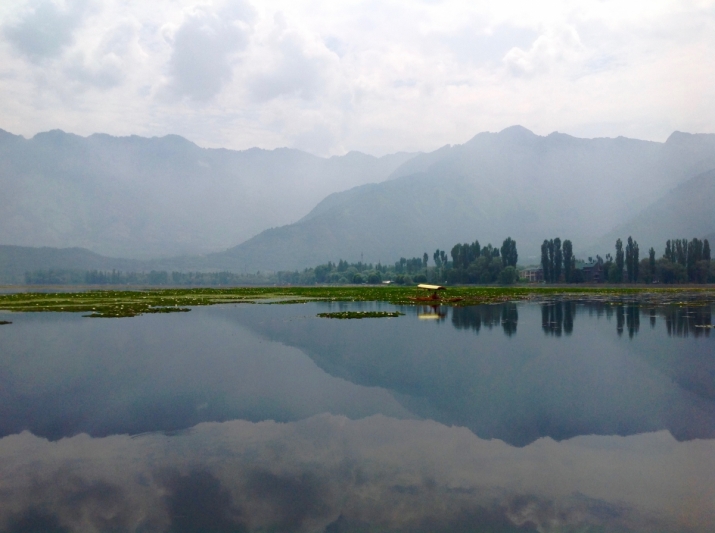 A lone shikara floats among the water lilies. Photo by Konchok Rinchen for Core of Culture, 2016
A lone shikara floats among the water lilies. Photo by Konchok Rinchen for Core of Culture, 2016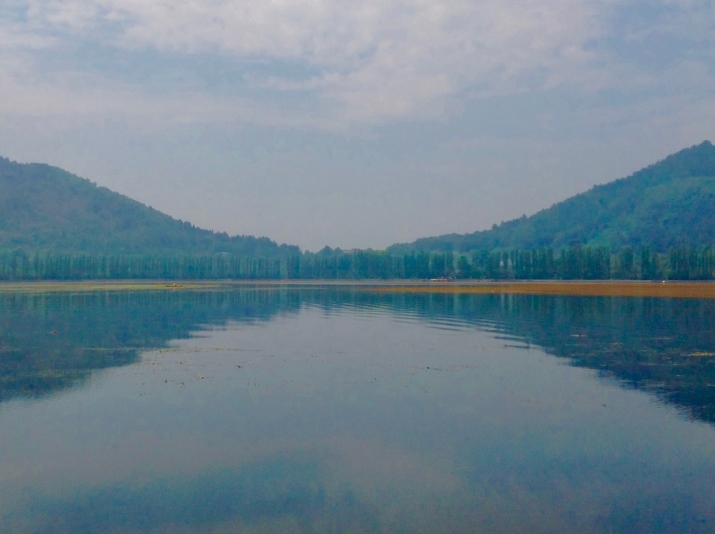 Rooftops of the Maharaja’s Palace in the center of the hills. The problems began in 1947, when the last Maharaja of Jammu and Kashmir determined that Kashmir would be part of India. Photo by Konchok Rinchen for Core of Culture, 2016
Rooftops of the Maharaja’s Palace in the center of the hills. The problems began in 1947, when the last Maharaja of Jammu and Kashmir determined that Kashmir would be part of India. Photo by Konchok Rinchen for Core of Culture, 2016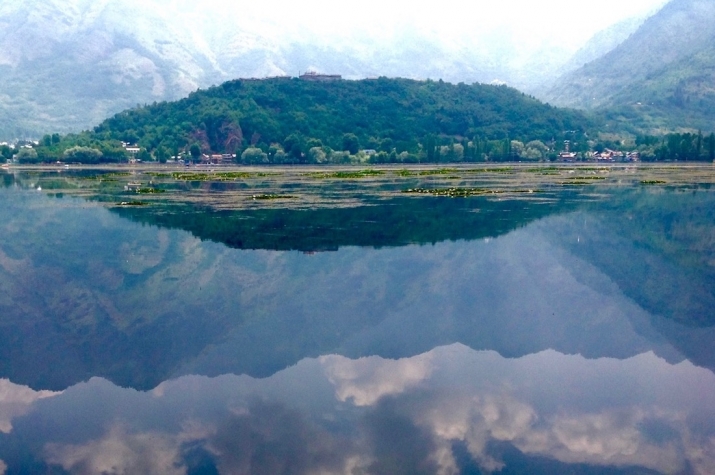 The Taj Hotel sits atop a hill amid an amazing reflected vista. Photo by Konchok Rinchen for Core of Culture, 2016
The Taj Hotel sits atop a hill amid an amazing reflected vista. Photo by Konchok Rinchen for Core of Culture, 2016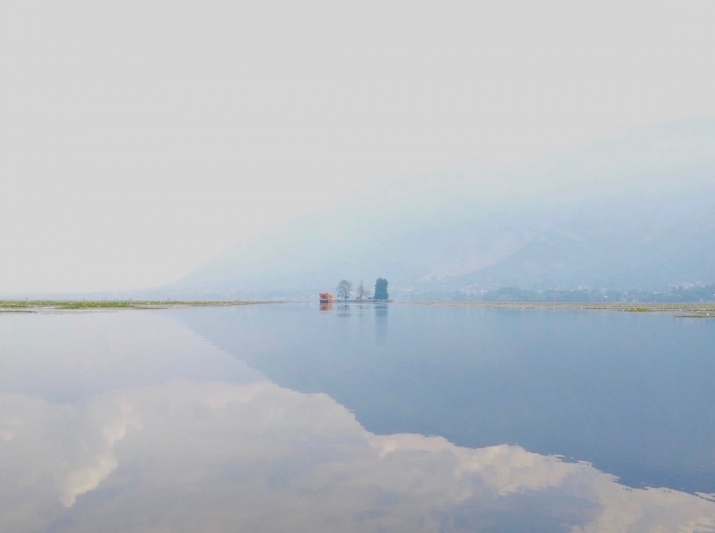 Three symbolic trees on an island in the lake, embraced by an atmospheric rainbow. Photo by Konchok Rinchen for Core of Culture, 2016
Three symbolic trees on an island in the lake, embraced by an atmospheric rainbow. Photo by Konchok Rinchen for Core of Culture, 2016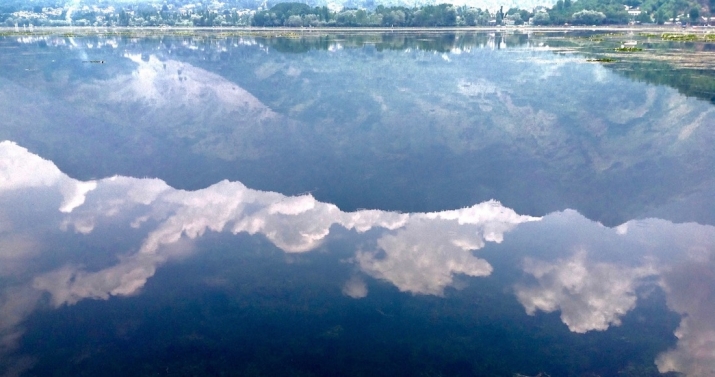 The town of Srinagar appears small against the reflection of the sky and mountains that hold it. Photo by Konchok Rinchen for Core of Culture, 2016
The town of Srinagar appears small against the reflection of the sky and mountains that hold it. Photo by Konchok Rinchen for Core of Culture, 2016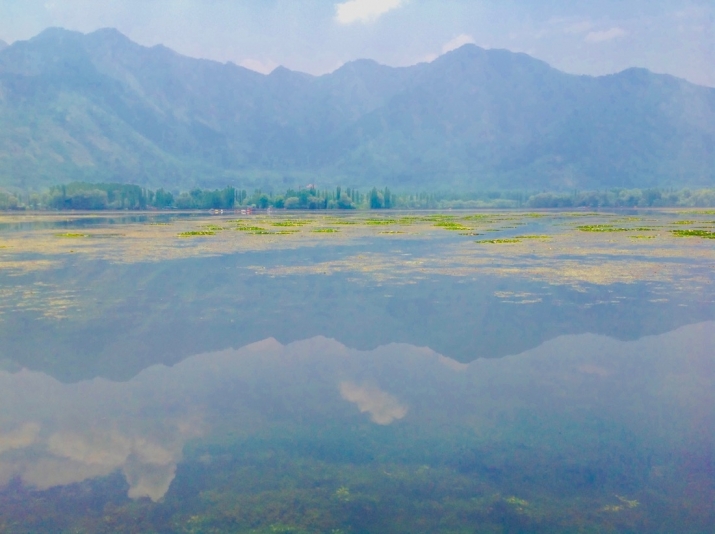 A landscape aglow in the air and under the water. Photo by Konchok Rinchen for Core of Culture, 2016
A landscape aglow in the air and under the water. Photo by Konchok Rinchen for Core of Culture, 2016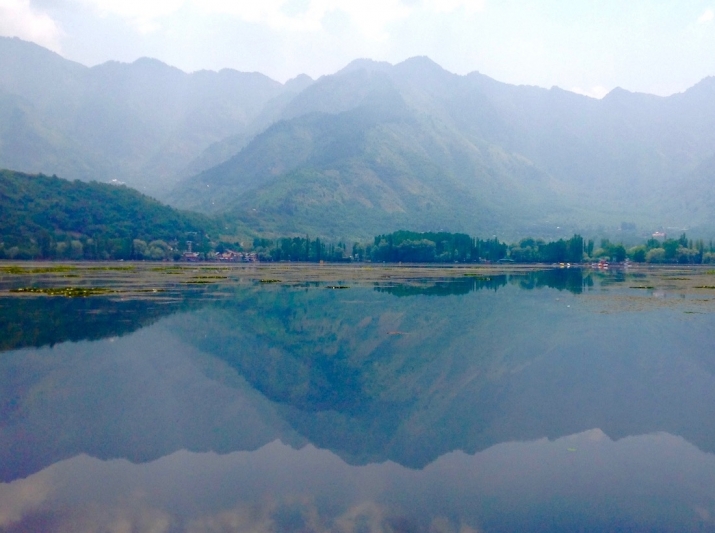 Stillness reveals balance and harmony. Photo by Konchok Rinchen for Core of Culture, 2016
Stillness reveals balance and harmony. Photo by Konchok Rinchen for Core of Culture, 2016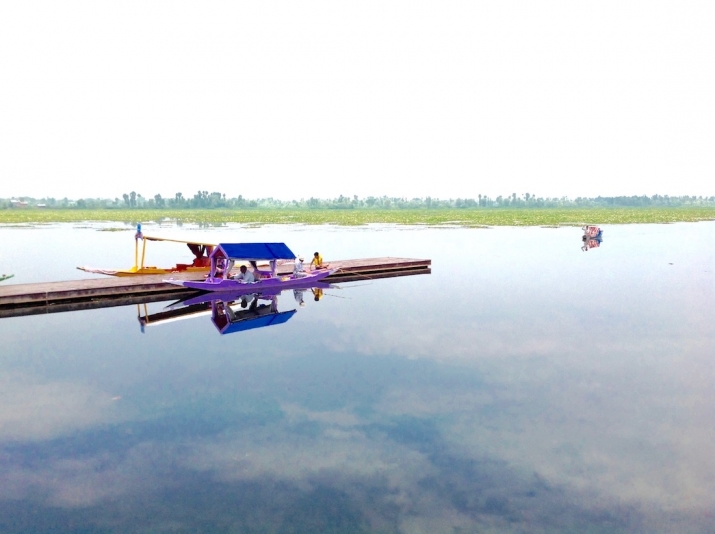 Three shikaras appear to float in the sky. Photo by Konchok Rinchen for Core of Culture, 2016
Three shikaras appear to float in the sky. Photo by Konchok Rinchen for Core of Culture, 2016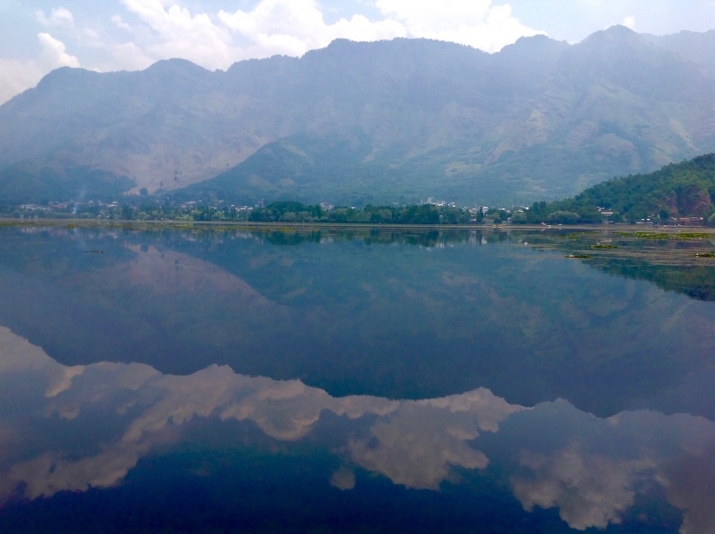 What lies beneath the trouble is calm and whole. Photo by Konchok Rinchen for Core of Culture, 2016
What lies beneath the trouble is calm and whole. Photo by Konchok Rinchen for Core of Culture, 2016













